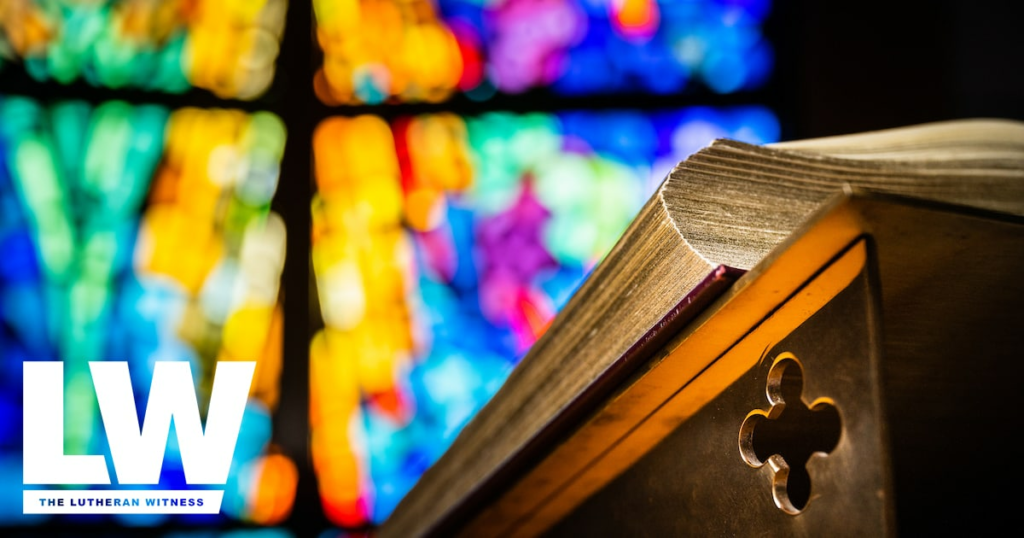by Dr. Albert B. Collver
In John 17:11, Jesus prayed to His Father that the Church “may be one, even as we are one” (ESV). Yet, already in the early Church, St. Paul writes, “For it has been reported to me by Chloe’s people that there is quarreling among you” (1 Cor. 1:11). From the earliest days of the Church, there has been external division caused by sin, personalities, differences in practice, and most significantly, doctrine.
From a historical perspective, there are a few events that can help explain how we have ended up with the more than 20,000 denominations, including Lutheran and Reformed, that exist today. What follows is a short overview that simplifies the details.
The first great schism in the Church occurred in A.D. 1054 and divided the Church into roughly two parts. One group was Western and followed Rome. The other group was Eastern and followed the patriarch of Constantinople. The reason for the division was primarily over two items: the filoque (the portion of the Creed which says that the Holy Spirit “proceeds from the Father and the Son”) and the claim that the Pope had jurisdiction over the entire church.
The next major schism in the church happened at the time of the Reformation and occurred primarily over the teachings on justification (how a sinner becomes right with God) and the Lord’s Supper. Three distinct groups emerged in the Western Church: Roman Catholics, Lutherans, and Protestants (Reformed). In regard to the Lord’s Supper, both Roman Catholics and Lutherans confessed that Christ gave His body and blood to eat and to drink in the Lord’s Supper. The Reformed confessed that Christ was present in some sort of spiritual way but not present with His body and His blood. The primary leaders in Reformed Christianity were Huldreich Zwingli (1484–1531) and John Calvin (1509–1564). Rome insisted that Christ made His body and blood present through the miracle of transubstantiation, while Lutherans simply accepted Christ’s words without proposing a theory as to how He did so.
For all intents and purposes, most of the denominations that we know in America today ultimately can trace their roots back to the Church in England, which formed shortly after the Lutheran Reformation, when King Henry VIII broke away from Rome so he could divorce his wife, Catherine of Aragon. The Church of England tried to take a mediating stance between the Reformed and the Lutheran positions (while rejecting the Roman Catholic doctrine of transubstantiation), ultimately leaving its confession about the Lord’s Supper ambiguous, confessing a “real spiritual presence” of Christ in Holy Communion.
To oversimplify matters, after its split from Rome, division in the Anglican Church arose over the matter of structure and governance. The Presbyterians shared a common belief with the Anglican Church on most doctrines, but did not want the church ruled by bishops. The Episcopalians were simply the Anglican Church transplanted to American soil. The Baptists arrived in America as dissidents from the Anglican Church, disagreeing on the teaching of Baptism (adult baptism) and holding that the church should be governed congregationally. Methodism arose in the 18th century because the Wesley brothers (John and Charles) felt the Anglican Church needed to be revitalized. Not surprisingly, when Methodism needed to be revitalized at the end of the 19th and beginning of the 20th centuries, the result was the Holiness Churches, e.g., Pentecostals. The Disciples of Christ (essentially the first so-called nondenominational church) came out of the Presbyterian Church in the 19th century.
In essence, nearly every denomination or group in America descended as an offshoot of the Anglican Church, because English was the common language to both America and England. What this means from a practical standpoint is that these churches share a common heritage and have agreement on many doctrines because of their common Reformed origin. It is probably not an overstatement to say all Reformed Churches view the Ascension of Christ and the Lord’s Supper in a common way, namely that Christ’s ascension into heaven means that His body and blood cannot be on the altar, but that Christ is present in some spiritual sort of way.
The common heritage among Reformed churches, similar views on the Lord’s Supper and the Ascension, and a different understanding on the concept of fellowship allow these various church bodies to hold joint community services together in a way that Lutherans cannot. Lutherans have a different confession, heritage, and understanding of what constitutes church fellowship.
Until Christ’s return, we pray with Jesus that “they may be one” and that we remain faithful until He returns, when He will unite the entire Christian Church as one.
—
About the Author: Dr. Albert B. Collver is executive pastoral assistant for LCMS World Relief and Human Care.





